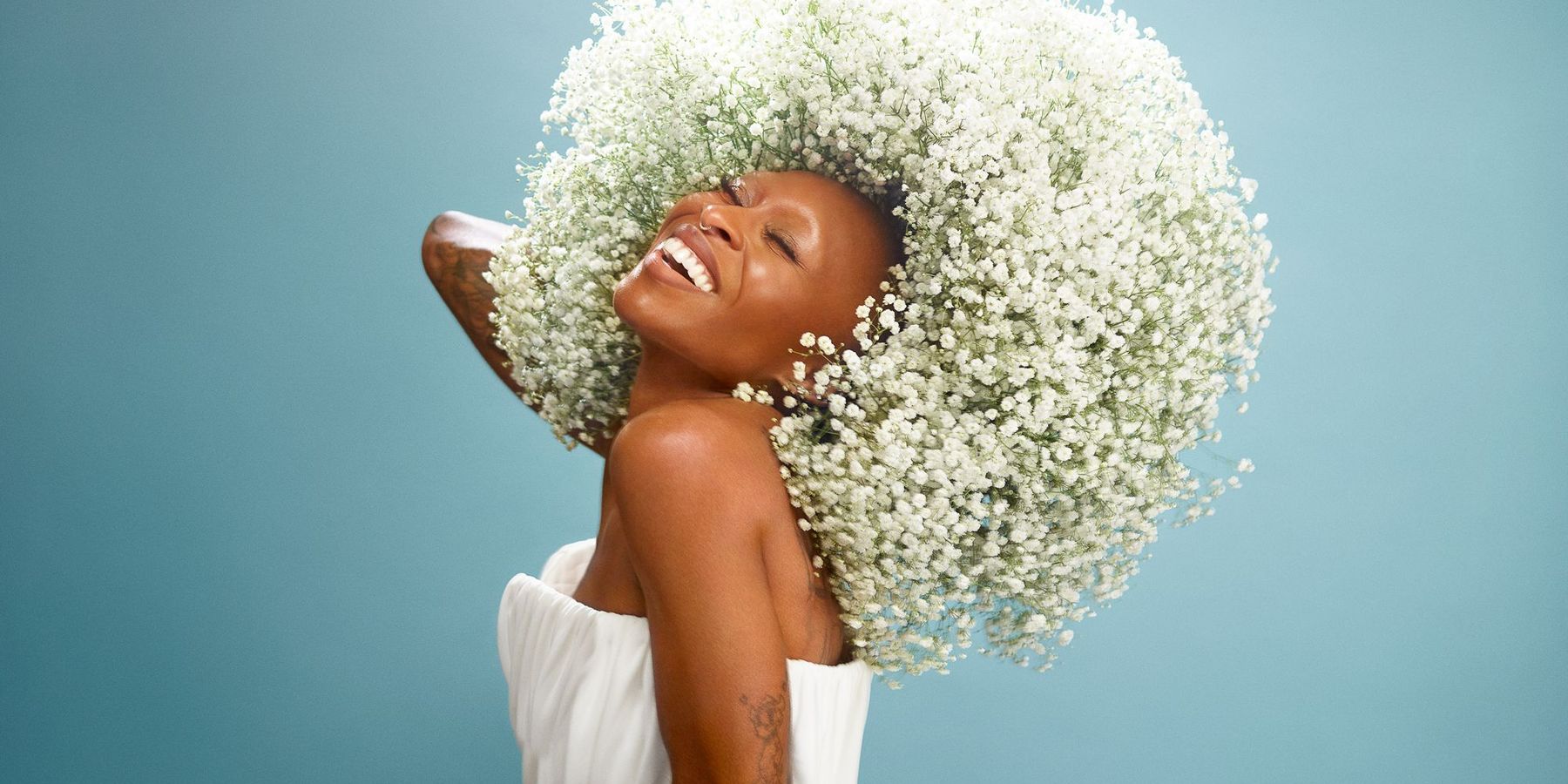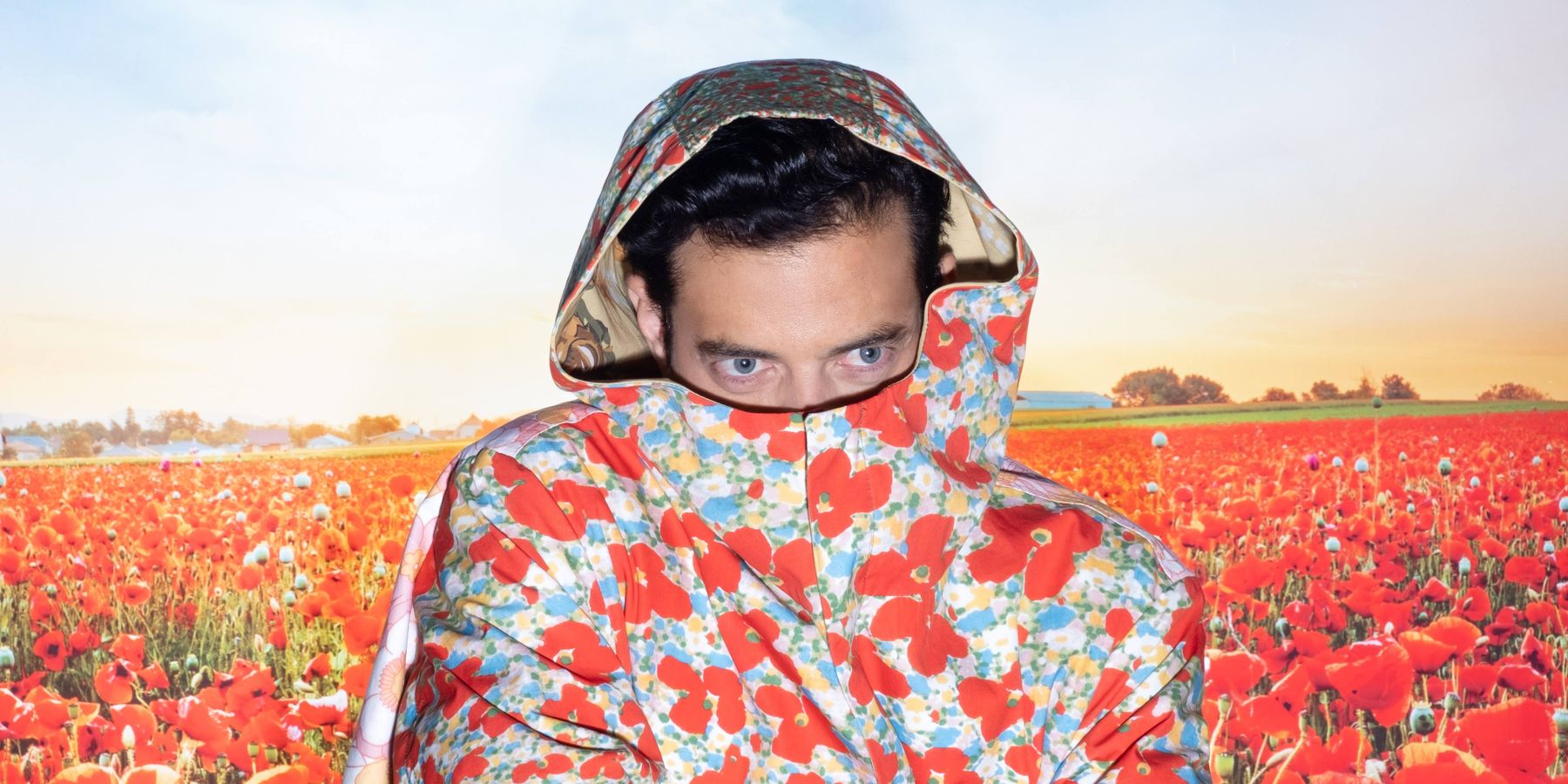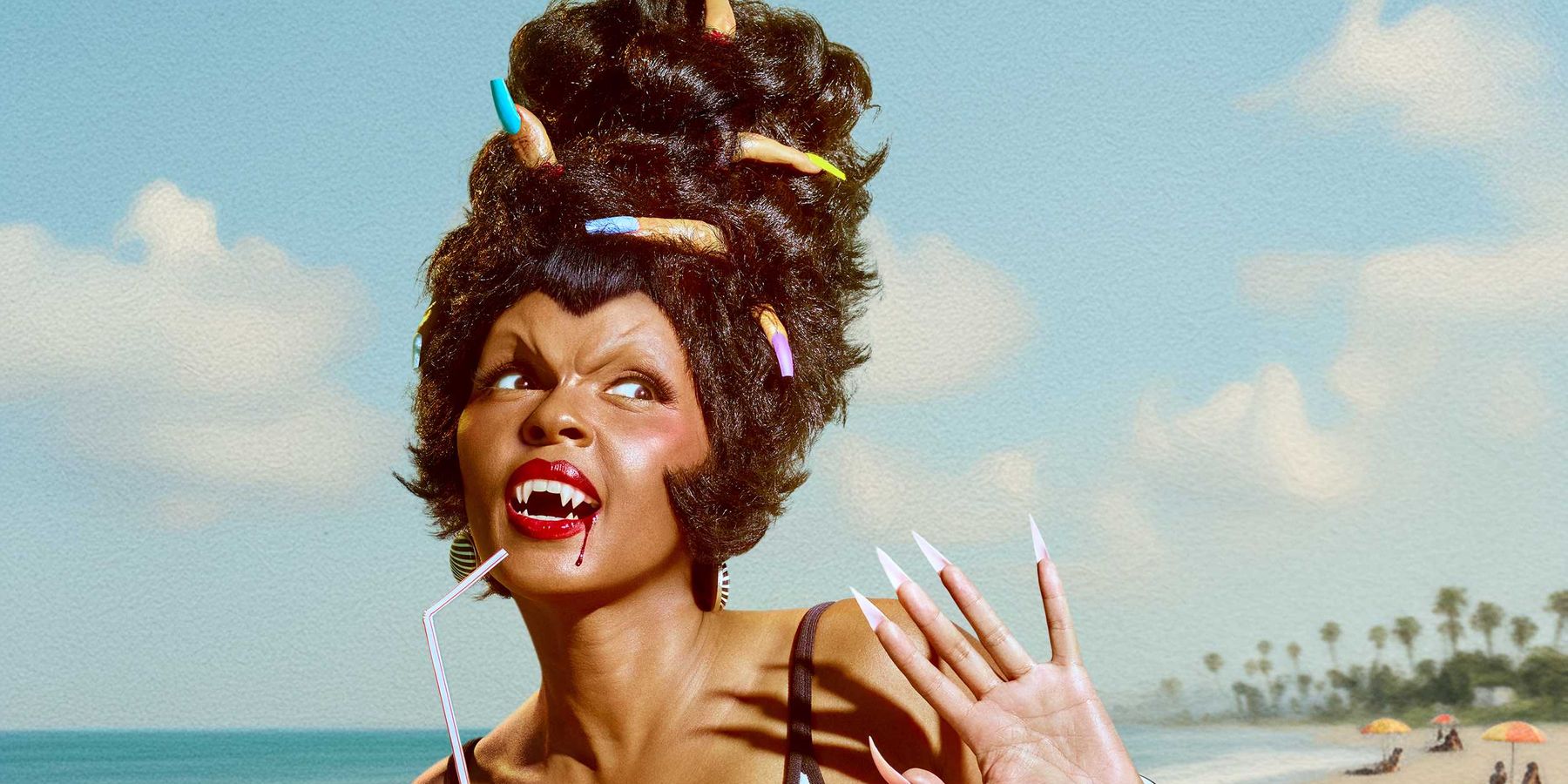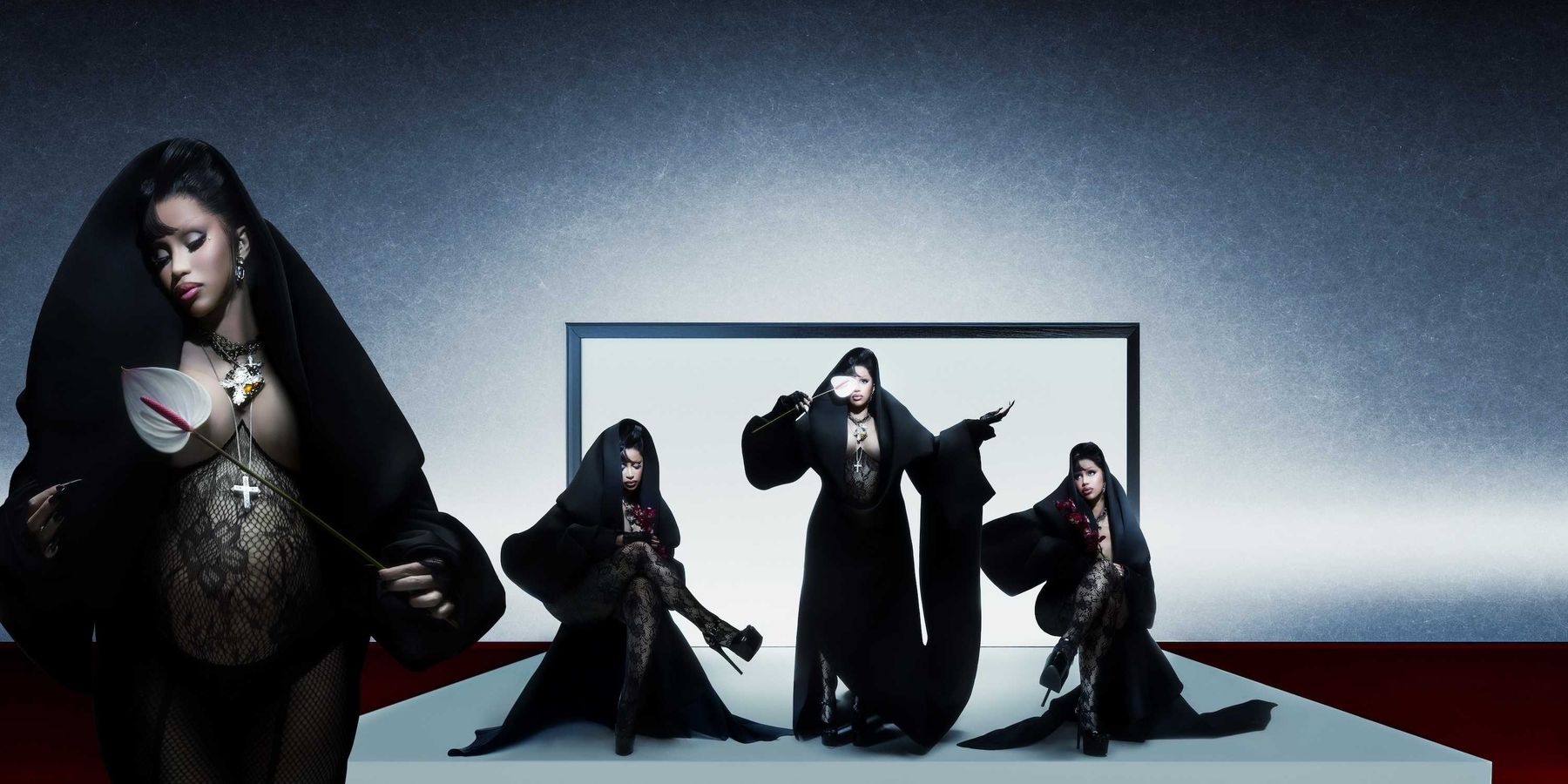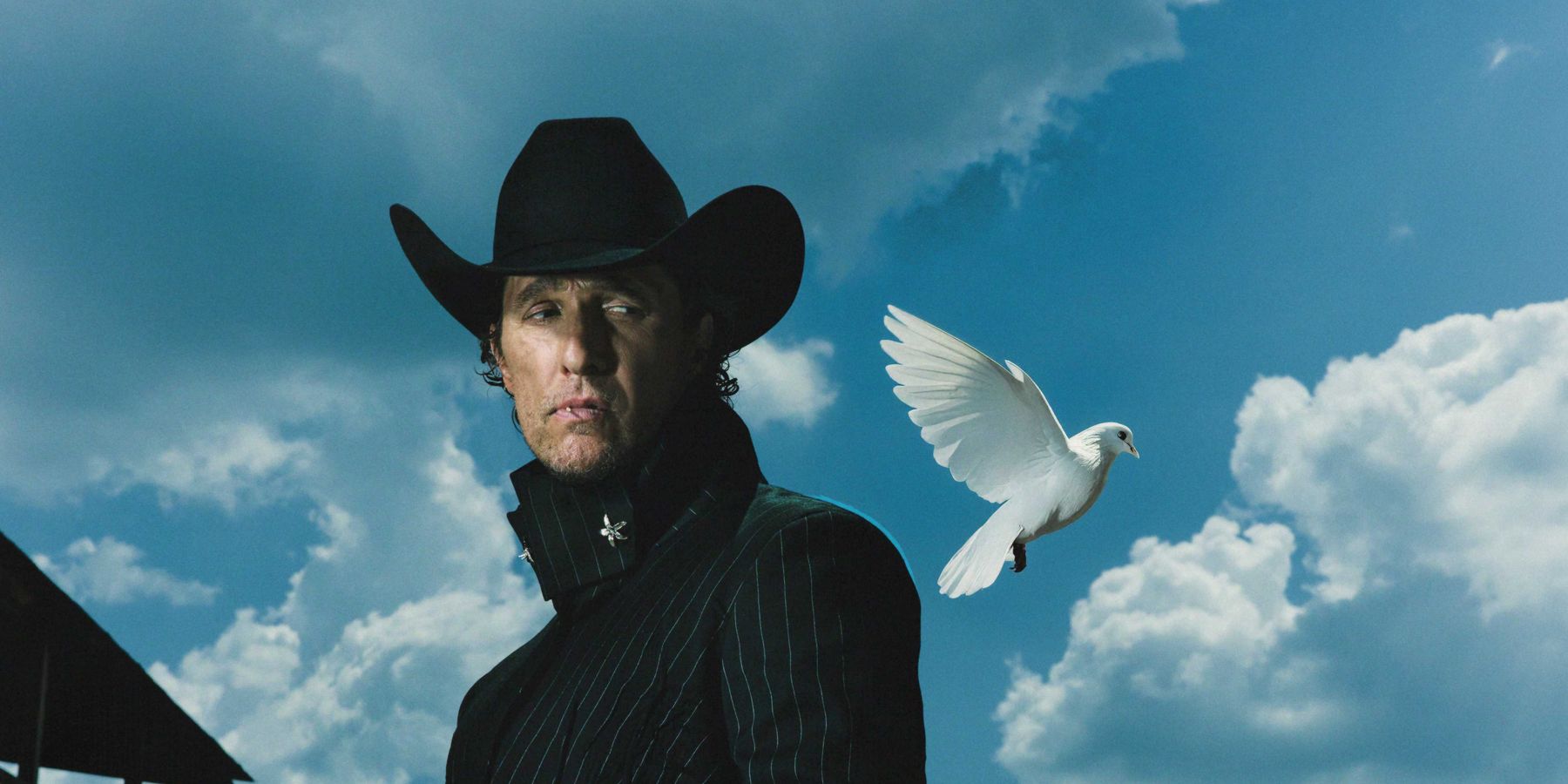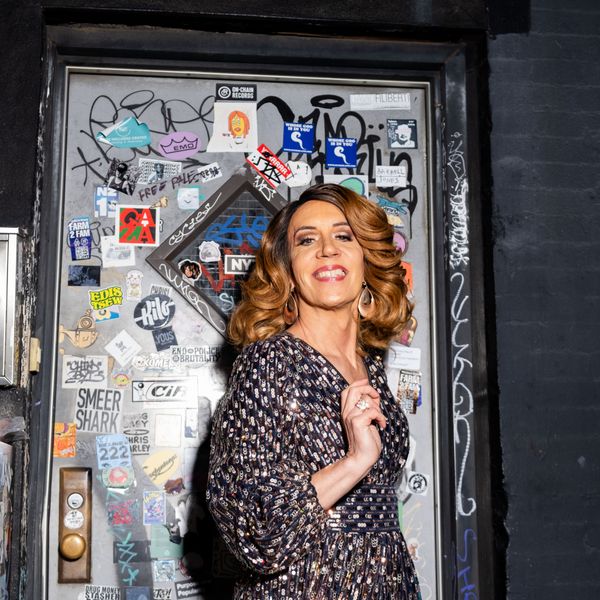
Linda Simpson, the Historian of Queer New York
Story by Siddhant Talwar
Apr 03, 2024
New York City has always had a great love affair with drag. Even RuPaul, the queen who is at this point ubiquitous with the word drag, got her start in the city that has always been a melting pot of cultures and thus artistry. It’s what brought me here — a queer immigrant artist and drag performer trying to make it in a city with one of the richest histories of drag.
Linda Simpson — an icon, photographer, drag queen, RuPaul's contemporary and historian — has been a cornerstone of New York drag and queer culture. In the ‘80s, she hosted shows regularly at the iconic Pyramid Club and was heavily involved in queer culture in the East Village at large. She published a zine called My Comrade that highlighted the queerdos. During it all, she carried a point-and-shoot camera with her.
Today, Linda still hosts a very successful drag bingo night. Her work can be currently viewed at the Brooklyn Museum, where My Comrade is part of a prolific exhibit on zines. Her photos from back in the day were published as a book called The Drag Explosion And she has a show of the same name at nightclubs around the city In which she presents an incredible archive of queer nightlife in spaces.
PAPER caught up with Linda at her show at C'mon Everybody to chat about her work, queer nightlife in the '80s and RuPaul's Drag Race.
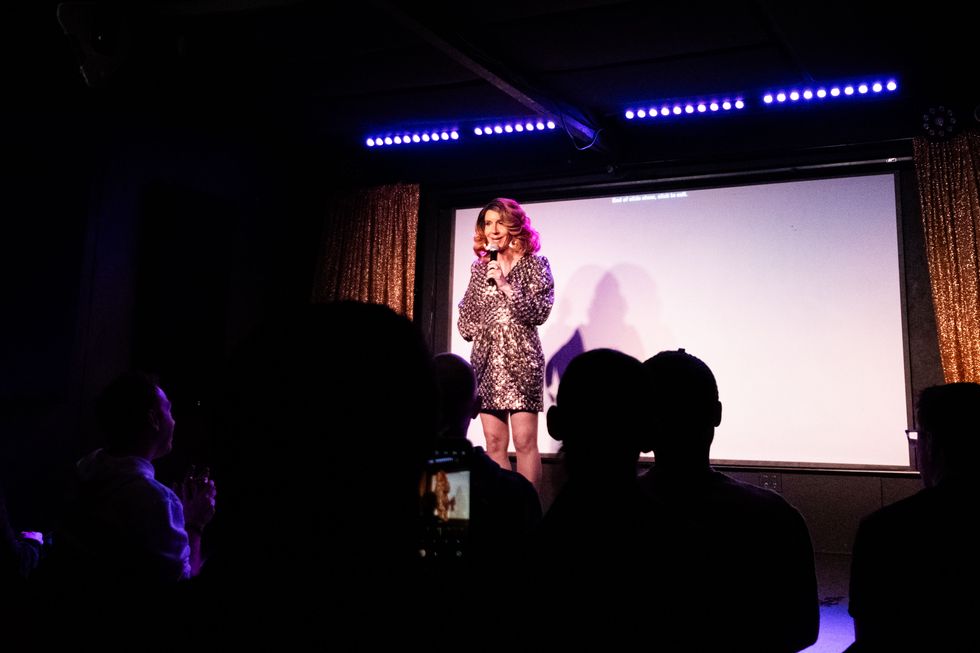
Linda! How did you get your start in drag?
Honestly, I was just hanging out a lot in New York City and then started going to the East Village. There was this very interesting drag scene that was going on, so I was intrigued.I became a fan, and then I started becoming friendly with some of the queens, especially at the Pyramid Club. After that, I didn't give it much thought. I just kind of like, joined the fray. I didn't really know how to do makeup so other people would help me. It was all kind of learn by just doing it.
My Comrade is part of an exhibit at the Brooklyn Museum. How does that feel?
It's validating! I'd like to think My Comrade would at least be considered for an exhibit like this, but to see it happen and the general public getting to interact with My Comrade has been gratifying.
You've made such a mark on NYC counterculture both with your drag and My Comrade. How did you enter the zine scene back in the day?
A lot of magazines back then were downtown, including PAPER! With My Comrade, I wanted to cover the East Village scene. I didn't want to make it completely about that, but that was kind of a backbone. Within the gay community there's always like minorities within minorities so we were a little bit more radical and cutting edge and avant-garde. That being said, it wasn't a snobby magazine like, "Oh, you only understand it if you're part of this group." I wanted everybody to be appreciated.
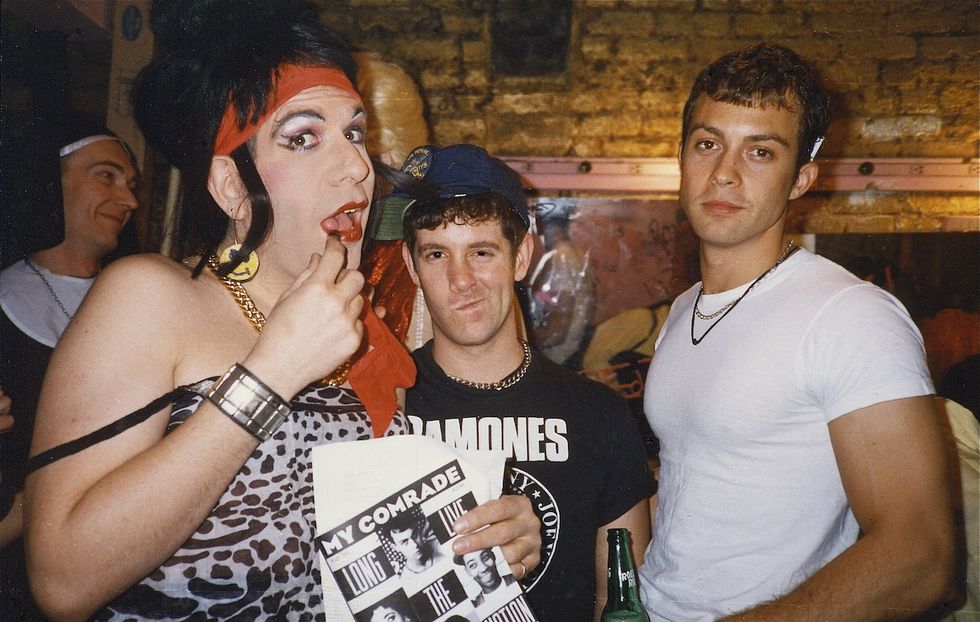
Hapi Phace, George and Adam at the My Comrade release party at Pyramid Club, 1990.
Photo courtesy of Linda Simpson
That's amazing. Do you think that counter culture still exists today? Or have we lost it?
I'm not sure to be honest. I think there is sort of some of that same community going on in Brooklyn and probably other places too, but our time was a little unique, of course, because it was more geographically centered in the East Village. We all partied, performed and gossiped there.
Speaking of community, you were in the critically acclaimed documentary Wig, which was about the iconic Wigstock festival hosted by Lady Bunny. You also have a whole section in your book about Wigstock. What was it like being someone who was not only performing at, but also documenting Wigstock?
Many people were taking photos at Wigstock. I think what made my photos a little different is that I was behind the scenes most of the time. When it started in Tompkins Square Park, there really was no backstage. People would just hang out on the sides of the band shell. When it became bigger, we needed a backstage. It became more like a party backstage in some ways too. It was almost a high school reunion in some ways each year after.
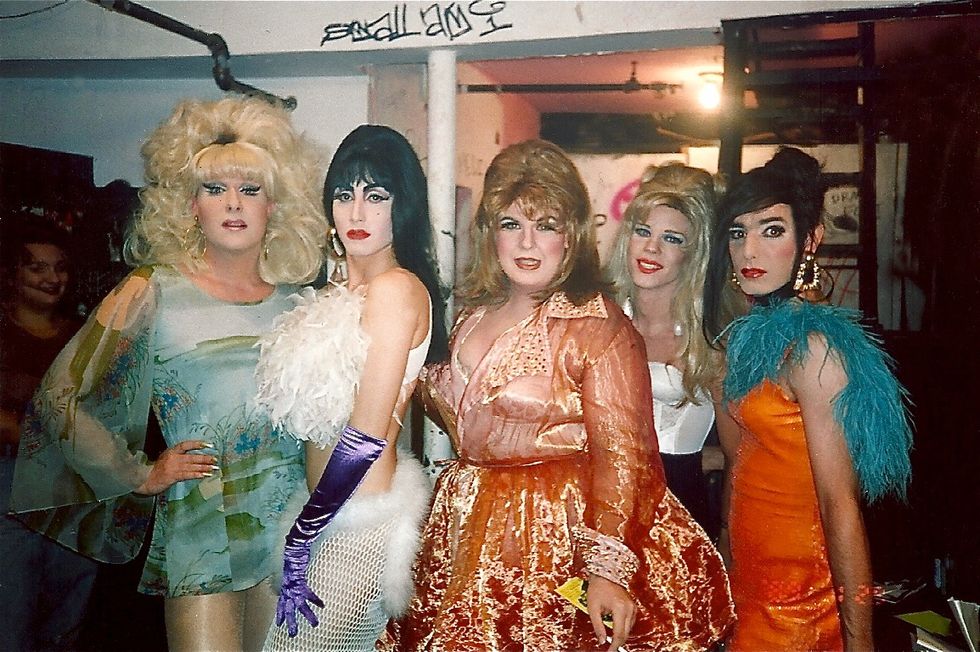
Lady Bunny, Misstress Formika, Sweetie, Anna Conda and Tabboo! in Pyramid Club dressing room, 1992.
Photo courtesy of Linda Simpson
That sounds incredible. What space do you occupy as a queen today?
I am a working drag queen with my bingo. That is kind of my bread and butter. I have side projects like the book and the slide show, but the balance keeps changing. Sometimes it's more art. Sometimes it's bingo!
How has your role as a queen changed while hosting?
I started out at the Pyramid. I would host on a Wednesday at 1 a.m. It was an insider community in many ways. A lot of the humor was reading, being bitchy to other queens. You know, queer humor! Now I do bingo in the early evening or day to a big mix of an audience. They aren't there to be read. They want to feel good by the time they leave. I will say though, a lot of straight people understand queer humor now.
Is there anything you miss from your Wednesdays? And anything you don't?
I don't work with other queens as much as I'd like to anymore, for sure. But also I don't feel the need to prove myself anymore which is nice.
Your incredible slide show, which shares the name with the photo book you made, The Drag Explosion, recaps NYC nightlife from the ‘80s and ‘90s. How does it feel to show it at new clubs in New York? Do you plan to keep rotating it at other clubs?
Yes! It's a staple of mine, and I am traveling with it to other places too. I do want to show it more in clubs for sure. And I would like to do some traveling and go to some institutions or art centers and present it.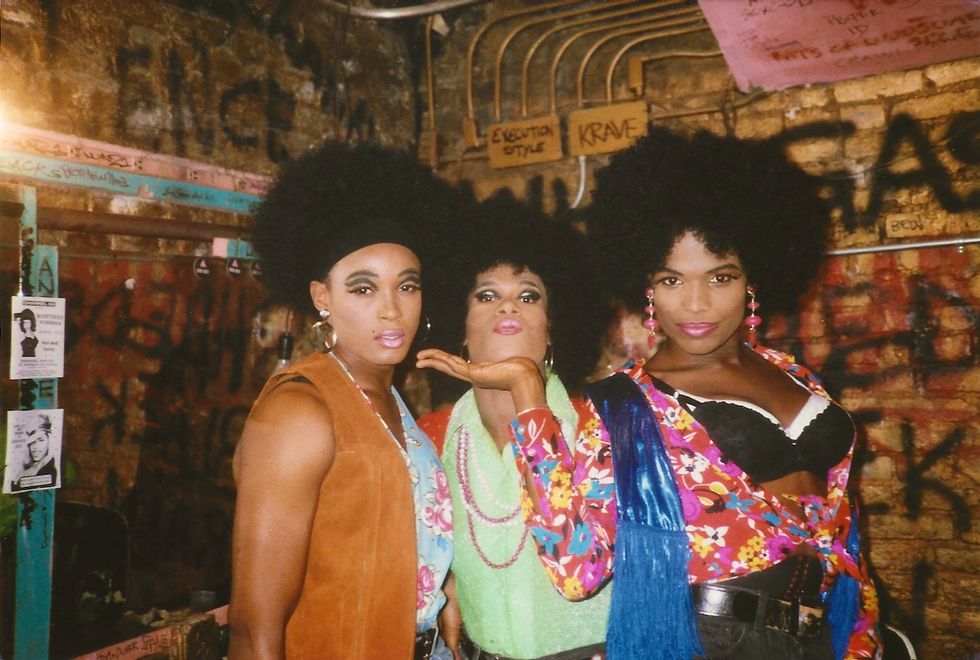
Afrodite, London Broil and Ebony Jet in Pyramid Club dressing room, 1992.
Photo courtesy of Linda Simpson
Who are some drag performers you enjoy today?
There's Julie J.She is always very dynamic. I have been to Sylvester a couple of times, so Julie, Paris and Vox. I recently also saw Sherry Vine's show, and she is so engaging. There are just so many talented performers in New York.
Drag has become much more mainstream in the past few years. There's almost been another explosion. Do you think in the mainstreaming of drag, it has lost its transgressive edge?
I think because Drag Race sets the pace so much, it is not as transgressive. However, that doesn't mean it's any better or worse. Even gay people are not as transgressive as they used to be. It's normalized, and that was kind of the point of gay liberation in some ways. I do think that drag can be transgressive at times, just not always.
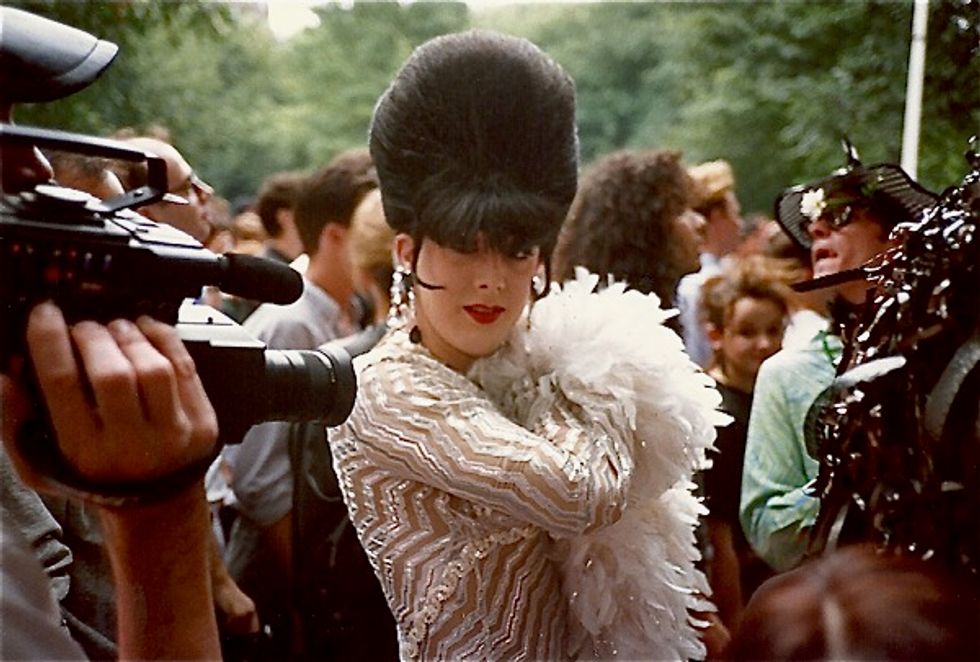
Perfidia at Wigstock in Tompkins Square Park, 1988.
Photo courtesy of Linda Simpson
What makes it less transgressive?
Drag is much more careerist now. And who am I to judge? It has become another outlet. There are queens who are dancers, and now they have to go on Drag Race and do an acting challenge. The needs from drag have changed.
Do you think it's easier to do drag now?
There is more knowledge out there, but it is also daunting. Like, there are standards of makeup. You go to Hell's Kitchen, and people have 20,000 rhinestones. That is expensive!
Back toThe Drag Explosion, when do you think it ended? Why was there a lull?
I think there was a time when nightlife was under siege. Clubs were being closed and raided. Drag was no longer a media sensation. The curtain fell. The community wasn't coming out as much, but there were drag queens who were doing things.
How has it been to witness another explosion with Drag Race?
Well, this one is televised week by week. There seems to be no stop to the momentum Drag Race has. This machine, this empire, it's so big. I will say, high tide raises all ships. I have been a benefactor as more people are curious about drag. However, I think people still do not know what to do with it. There is only this one huge project on drag, and nothing else can even come close. The industry almost doesn’t know what to make of drag.
It seems like after every show of yours there is a big line of fans just waiting to talk to you. The books always sell out! How does it feel?
It's amazing. To know my work is appreciated is validating.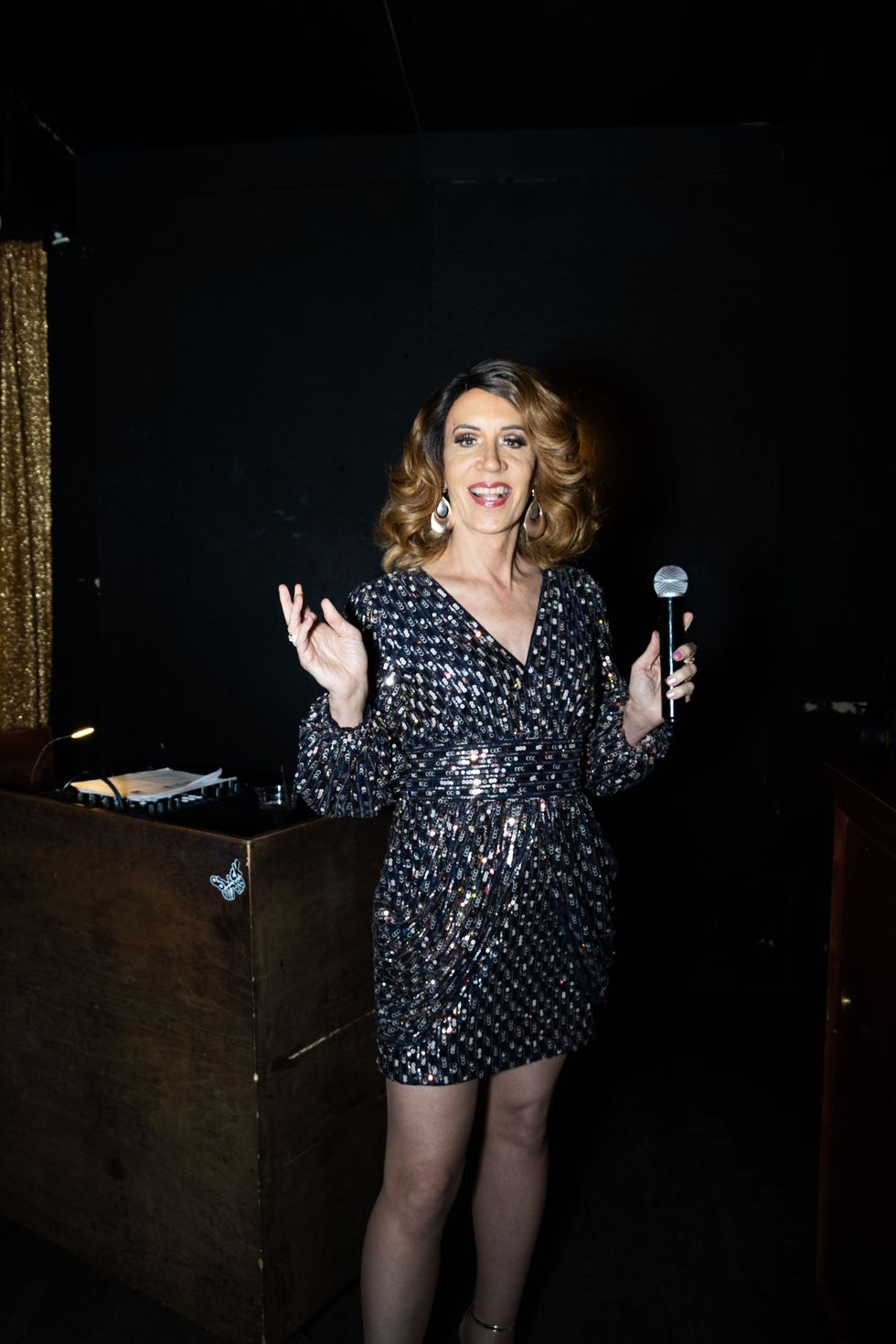
Photography: Siddhant Talwar
MORE ON PAPER
Entertainment
Cynthia Erivo in Full Bloom
Photography by David LaChapelle / Story by Joan Summers / Styling by Jason Bolden / Makeup by Joanna Simkim / Nails by Shea Osei
Photography by David LaChapelle / Story by Joan Summers / Styling by Jason Bolden / Makeup by Joanna Simkim / Nails by Shea Osei
01 December
Entertainment
Rami Malek Is Certifiably Unserious
Story by Joan Summers / Photography by Adam Powell
Story by Joan Summers / Photography by Adam Powell
14 November
Music
Janelle Monáe, HalloQueen
Story by Ivan Guzman / Photography by Pol Kurucz/ Styling by Alexandra Mandelkorn/ Hair by Nikki Nelms/ Makeup by Sasha Glasser/ Nails by Juan Alvear/ Set design by Krystall Schott
Story by Ivan Guzman / Photography by Pol Kurucz/ Styling by Alexandra Mandelkorn/ Hair by Nikki Nelms/ Makeup by Sasha Glasser/ Nails by Juan Alvear/ Set design by Krystall Schott
27 October
Music
You Don’t Move Cardi B
Story by Erica Campbell / Photography by Jora Frantzis / Styling by Kollin Carter/ Hair by Tokyo Stylez/ Makeup by Erika LaPearl/ Nails by Coca Nguyen/ Set design by Allegra Peyton
Story by Erica Campbell / Photography by Jora Frantzis / Styling by Kollin Carter/ Hair by Tokyo Stylez/ Makeup by Erika LaPearl/ Nails by Coca Nguyen/ Set design by Allegra Peyton
14 October
Entertainment
Matthew McConaughey Found His Rhythm
Story by Joan Summers / Photography by Greg Swales / Styling by Angelina Cantu / Grooming by Kara Yoshimoto Bua
Story by Joan Summers / Photography by Greg Swales / Styling by Angelina Cantu / Grooming by Kara Yoshimoto Bua
30 September
